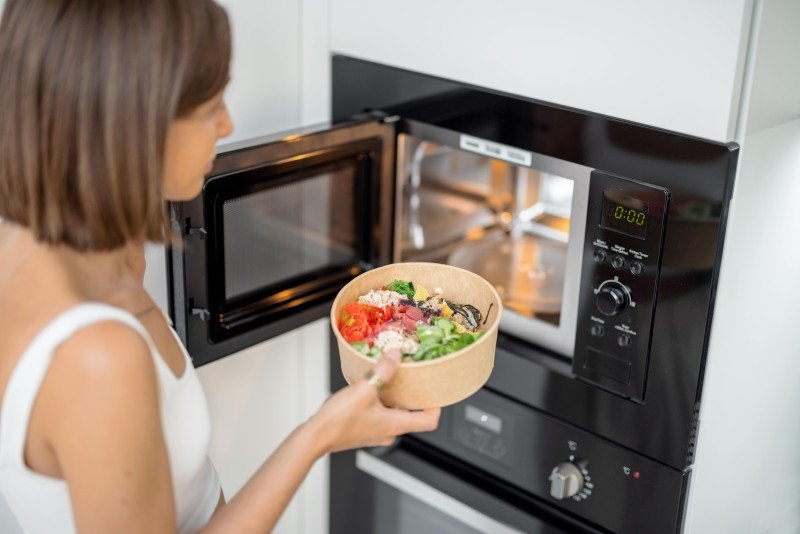Understanding Electric Ovens and Hobs: Your Guide to Cooking Efficiency
Electric ovens and hobs have changed the cooking landscape, offering home cooks and professional chefs a reliable, efficient, and consistent method to prepare meals. As technological developments continue to affect home appliance design, the performance and functionality of electric cooking systems have actually considerably enhanced. This short article dives into the features, benefits, and considerations surrounding electric ovens and hobs, supplying a comprehensive overview for anybody aiming to update or purchase kitchen devices.
What Are Electric Ovens and Hobs?
Electric ovens are kitchen devices developed for baking, broiling, roasting, and other cooking techniques that require controlled heat. They make use of electric coils or glowing heat aspects to generate and maintain the preferred temperature level. Electric hobs, frequently referred to as electric cooktops, are flat surface areas with heating elements that permit pots and pans to be positioned directly on them for cooking.
Table 1: Key Differences Between Electric Ovens and Hobs
| Feature | Electric Oven | Electric Hob |
|---|---|---|
| Main Function | Baking, roasting, broiling | Heating pots and pans for cooking |
| Heating Method | Electric coils or radiant elements | Induction, glowing, or ceramic aspects |
| Operation Temperature Range | Up to 500 ° F (260 ° C | ) Varies by style; typically lower than ovens |
| Cooking Styles | Versatile; appropriate for different dishes | Mostly stovetop cooking techniques |
| Space Requirement | Normally built into cabinets | Frequently standalone or built-in choices |
| Energy Consumption | Generally higher, depending upon usage | More energy-efficient with induction hobs |
Benefits of Electric Ovens and Hobs
When thinking about electric ovens and hobs, it's important to understand their numerous benefits, which can boost the cooking experience.
1. Consistent Heating
Electric ovens and hobs supply even and consistent heating, which is crucial for many cooking techniques. This ensures that meals cook consistently, lowering the chances of overcooking or undercooking specific areas of food.
2. Security Features
Modern electric ovens and hobs come geared up with different safety functions to prevent mishaps in the kitchen. For example, lots of models consist of automated shut-off functions, hot surface indicators, and kid security locks.
3. Easy to Use
Unlike gas models, electric ovens and hobs are straightforward and easy to use. The simpleness of turning on a dial or pressing a button makes them available for cooks of all skill levels.
4. Versatile Cooking Options
With various cooking methods possible, from baking to simmering, electric models are flexible sufficient to accommodate a large range of culinary styles and preferences.
5. Cleaning and Maintenance
Electric ovens normally include smooth surfaces that are simple to tidy, especially models with self-cleaning capabilities. Hobs, especially induction types, also offer a flat surface area that is easy to wipe down, making maintenance a breeze.
Popular Types of Electric Ovens:
- Conventional Ovens: Ideal for traditional baking and roasting.
- Convection Ovens: Circulate hot air for much faster, even cooking.
- Microwave Ovens: Use electro-magnetic radiation for quick heating and cooking.
- Toaster Ovens: Small counter top ovens for quick tasks.
Popular Types of Electric Hobs:
- Induction Hobs: Utilize electromagnetic fields for fast heating and energy performance.
- Radiant Hobs: Feature electric coils that heat up to cook food.
- Ceramic Hobs: Offer a smooth surface area and are simple to clean.
Factors To Consider When Choosing Electric Ovens and Hobs
While electric ovens and hobs provide various benefits, several factors should be taken into account to make sure the right suitable for your kitchen:
1. Space Availability
Evaluate the available kitchen area before making a purchase. Figure out whether you require an integrated design or a freestanding appliance, and determine the dimensions carefully to make sure a good fit.
2. Cooking Needs
Determine your cooking practices and preferences. If you regularly bake big quantities or cook complex meals, think about an oven with advanced features like convection settings or multiple racks.
3. Energy Efficiency
Look for energy-efficient models that can assist conserve on utility bills with time. Energy Star-rated home appliances can be particularly cost-effective.
4. Budget
Set a realistic budget that represents both the initial purchase and ongoing operating expense. In addition to the appliance cost, consider installation and potential repair work.
5. Extra Features
Consider whether functions like smart technology, programmable settings, or steam cooking options are important for your cooking style.
FAQ Section
Q: How do I clean my electric oven?
A: Most electric ovens included self-cleaning choices. If your model does not have this function, enable the oven to cool, then clean down surface areas with a mixture of baking soda and water or an industrial oven cleaner.
Q: Is induction cooking safe?
A: Yes, induction cooking is considered safe as the heating component only activates when compatible cookware touches with it, minimizing the danger of burns.
Q: How long does it take for an electric oven to preheat?
A: Preheating times differ based upon the oven's design and temperature setting however typically vary from 10 to 15 minutes.
Q: Can I utilize any pots and pans on an induction hob?
A: No, just ferromagnetic cookware works with induction hobs. Fan Ovens For Sale for induction compatibility before usage to prevent damage.
Q: What is the distinction between a convection oven and a conventional electric oven?
A: A stove consists of a fan that flows hot air, guaranteeing even cooking and decreased cooking times compared to a conventional electric oven, which does not have this feature.
Electric ovens and hobs provide a modern-day service to various cooking requirements, offering efficiency and reliability in the kitchen. As customers examine their choices, comprehending the functions, types, and considerations will allow them to make educated decisions. Whether one is an occasional cook or a cooking enthusiast, electric devices can boost the total cooking experience, bringing benefit and imagination to the table.

